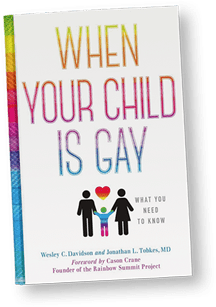Labels Explained:
Saturday night, my husband and I watched “Dallas Buyer’s Club”(he for the first time, I for the second). When actor Jared Leto makes his first appearance in the movie, my husband says “Rayon’s a transsexual, isn’t he? “ I say “Yep, he’s a transgender.” Hubby remarks “isn’t that the same thing?”
This had me wondering. To solve the riddle, I went to the website of Human Rights Campaign ‘s website that has resources. Here’s what I found:
Transgender is an umbrella term that includes people who are trans-sexual, cross-dressers or otherwise gender non-conforming.
A transsexual has changed or is in the process of changing his or her physical and or legal sex to conform to his or her internal sense of gender identity. Thus, Rayon is both a transgender and a transsexual. The term can also be used to describe people who, without undergoing medical treatment identify and live their lives full time as a member and of gender opposite to their birth sex. Rayon was undergoing treatment to transition from male to female or MTF before he died of HIV. Female transsexuals who transition to males are considered men or FTM.
What Other Terms Should Parent Know?
With so many labels for a generation that doesn’t want to be labelled, it’s hard to know what the alphabet stands for anymore. Polite words like homosexuals, now sound stilted, are seldom used today except by Fox News. Queer, once considered a slur is now being used by the LGBT community as a positive or neutral descriptive of each other, as is “butch” or “dyke” for lesbians whose behavior is judged by society to be masculine.
A lesbian who prefers to dress feminine, likes fashion, makeup, and is attracted to a similar lesbian is called a lipstick lesbian. Is a lesbian technically called a gay? Although homosexual men are called gay, many lesbians liked their own distinction or sub-group and prefer to be dubbed lesbian.
The Queer Alphabet
Asexual: It means you’re not attracted to anyone, and you do not experience sexual orientation.
Binary gender: Society’s norm assigning gender to either male or female.
Bisexuality: It means that you are attracted to both men and women. It does NOT mean that you can’t decide if you are gay or straight.
Boyfriend/girlfriend: If a gay or lesbian introduces you to his boyfriend or her girlfriend, the person is usually a significant other.
Cisgender: Any person who’s physical body matches their gender identity.
Cross-dresser: Previously known as transvestites, don’t associate with the LGBTQ community and don’t see themselves as anything but straight. Think Robin Williams as a nanny in Mrs. Doubtfire or Steven Tyler of Aerosmith.
Drag Queen: They are not usually labeled as cross-dressers or transvestites. People that dress in drag tend to be gay such as RuPaul, the performance artist. He has a long-standing boyfriend, a Montana rancher.
Gender Dysphoria or GID: A disorder classified by the American Psychiatric Association marked by severe distress and discomfort caused by conflict between one’s gender identity and one’s designated sex at birth.
Gender Identity: Refers to a person’s innate, deeply felt psychological identity as male or female.
Inter-sex or inter-sexuality: Refers to some externally visible characteristics such as a combination of both male and female sexual organs. It is estimated that intersexuality affects 1/5-2% of the population.
Pansexuality: Not limited or inhibited in sexual choice with regards to the gender of activity. It means all genders: boys, girls, gender queers, intersexed.
Partner: Significant other. Could be a same-sex spouse too. It’s wise to check first to see if the husband wants to be called a husband or wife. It may be safe just to use the first name when addressing.
Questioning: It means you are undecided about being straight or gay. You may be attracted to the same sex, but have not defined yourself as gay. Maturity will give you the answer.
Sexual orientation: Different from sexual identity. It’s the physical or emotional attraction to same and/or opposite gender.
Third gender: It’s a gender identity. Neither considered male or female whether by their will or by society. Third genders preferred to be referred to using gender-neutral pronouns such as one, ze, sie, hir or ey.
Here Today, Gone Tomorrow
With science’s new discoveries will come a slew of new terms. Today’s slang will be outdated soon. The Queer Alphabet will reflect these changes.

When Your Child Is Gay: What You Need To Know
For more detailed advice, see book, co-authored with a mother of a gay son and a psychiatrist, Jonathan L. Tobkes, M.D.